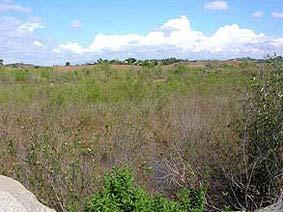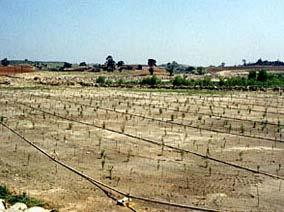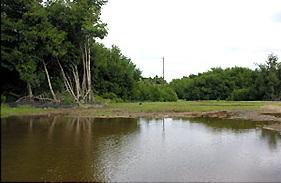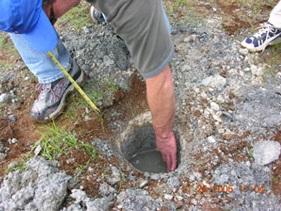Enforcement Actions Protect Wetlands
EPA's Section 404 enforcement program pursues enforcement actions against entities who conduct unauthorized activities (e.g., dredging, filling, grading without a permit) in waters of the United States. We work with the Army Corps of Engineers (Corps) and other agencies to prioritize and select cases and to coordinate field research, damage assessments and legal proceedings. Enforcement can be pursued via civil (judicial or administrative) actions or through criminal proceedings in conjunction with EPA’s Criminal Investigations Division. Reports of potential violations from other agencies or communities are added to our enforcement tracking system and case files are prepared for potential enforcement actions. EPA’s enforcement goals are to restore illegally filled waters and wetlands and deter future violations.
EPA often requires individuals -- companies and other entities -- to pay monetary penalties for violating wetlands requirements. In addition, EPA can require restoration or mitigation of impacts to any waters or wetlands that may have been damaged or destroyed. In these cases, the first priority is to remove the discharged material and restore the site. However, if this is not feasible, mitigation at other sites may also be considered. Restoration and mitigation can include a range of activities, such as:
- Restoring streambeds or wetlands which may have been damaged
- Reintroducing native species through planting
- Removing "exotic," or non-native species
Individuals must monitor restoration projects to ensure that native species reintroduced to the area are growing properly. In addition, the growth of non-native plants must be minimized. Projects must be monitored for a fixed period of time which is determined by the specifics of the site. Typically, the monitoring period ranges between five and ten years.
In order to determine if a restoration project has been successful, each project must meet success criteria, which are established on a case-by-case basis for each site. The criteria are linked to project goals determined by EPA. For example, to restore vegetation to an area, EPA may require that the site achieve certain survival rates of native plants or percent land cover by a specific date. For instance, the site may be required to exhibit 80% survival of planted native species after the first year, and 100% during each of the next four years.
Here are some examples:
- In California, on several days in 1998, Singh and Sons Inc. (Singh) discharged dredged and fill material into approximately 21 acres of the San Luis Rey River without first obtaining a Section 404 permit from the Army Corps of Engineers. Singh discharged the materials into the San Luis Rey River, adjacent wetlands and tributaries in an attempt to convert the wetlands into farmland.
 Singh Farms June 2005 - The restored river shows mature willow trees covering the disturbed area.
Singh Farms June 2005 - The restored river shows mature willow trees covering the disturbed area. Singh Farms March 2000 - Photo shows young willow trees, which were planted over the disturbed area a year earlier.On September 6, 2000, EPA issued an Administrative Order requiring Singh to stop discharging the materials into the River and to implement a restoration plan for the site. The restoration plan requires that Singh remove fill material, restore native plants to the site, remove the exotic Giant Reed (Arundo donax), and monitor the site until 2007.
Singh Farms March 2000 - Photo shows young willow trees, which were planted over the disturbed area a year earlier.On September 6, 2000, EPA issued an Administrative Order requiring Singh to stop discharging the materials into the River and to implement a restoration plan for the site. The restoration plan requires that Singh remove fill material, restore native plants to the site, remove the exotic Giant Reed (Arundo donax), and monitor the site until 2007.
- In Hawaii, EPA ordered Coluccio Construction Co. and landowner Kaneohe Ranch Co. to remove illegal fill and restore sensitive wetlands adjacent to Hamakua Stream in Kailua, Oahu. Colluccio, under an agreement with the landowner, filled the area to use as a storage site for construction equipment and stockpiles of excavated soil and rock. EPA’s action requires Coluccio to restore the site and monitor the recovery of these wetlands annually from 2007 through 2011.
 Hamakua site: Germinating grass seedlings on fill material replaced original wetland vegetation
Hamakua site: Germinating grass seedlings on fill material replaced original wetland vegetation Wetlands forensics: EPA's Dr. Robert Leidy examines the soil profile of the buried wetland. Note the high water table percolating up into the hole.
Wetlands forensics: EPA's Dr. Robert Leidy examines the soil profile of the buried wetland. Note the high water table percolating up into the hole.
